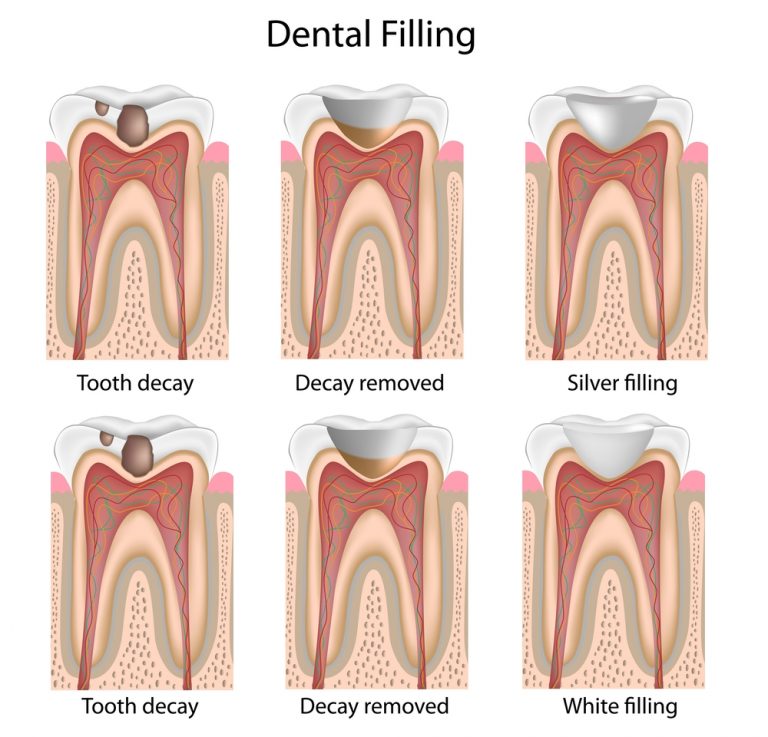95% of the patients go for tooth-colored fillings which polymerize with UV Light.Tooth preparation is usually required before placing a dental restoration. This process involves cutting the tooth usually with a dental drill to make space for the planned restoration, remove any dental decay and structurally unsound tooth. If permanent restoration can not be carried out after tooth preparation, temporary restoration is done.A tooth preparation is the finished product of a tooth’s structure prior to restoration with a dental restorative material, such as gold, amalgam, composite, porcelain or any number of other materials.
There are two types of preparations.

Intracoronal preparations are those preparations which serve to hold restorative material within the confines of the structure of the crown of a tooth. Examples include all classes of cavity preparations for composite or amalgam, as well as those for gold and porcelain inlays. Intracoronal preparations are also made as female recipients to receive the male components of RPDs.
Extracoronal preparations are those preparations which serve as a core or base upon which or around which restorative material will be placed to bring the tooth back into a functional or esthetic structure. Examples include crowns and onlays, as well as veneers.
In preparing a tooth for a restoration, a number of considerations will come into play to determine the type and extent of the preparation. The most important factor to consider is decay. For the most part, the extent of the decay will define the extent of the preparation, and in turn, the subsequent method and appropriate materials for restoration.
Another consideration is unsupported tooth structure. In the photo at right, unsupported enamel can be seen where the underlying dentin was removed because of infiltrative decay. When preparing the tooth to receive a restoration, unsupported enamel is removed to allow for a more predictable restoration. While enamel is the hardest substance in the human body, it is particularly brittle, and unsupported enamel fractures easily.

